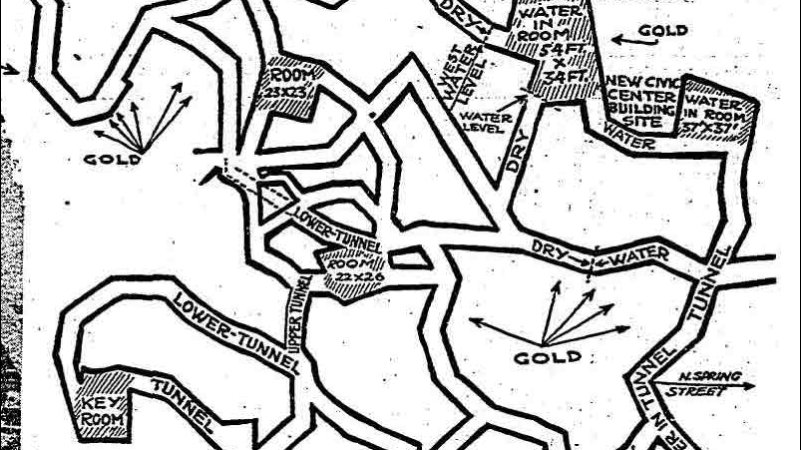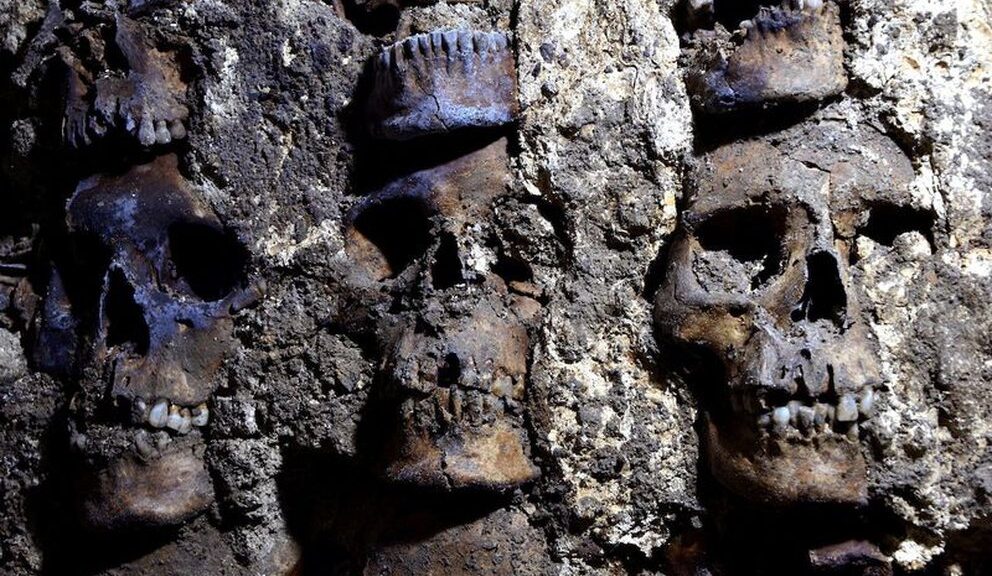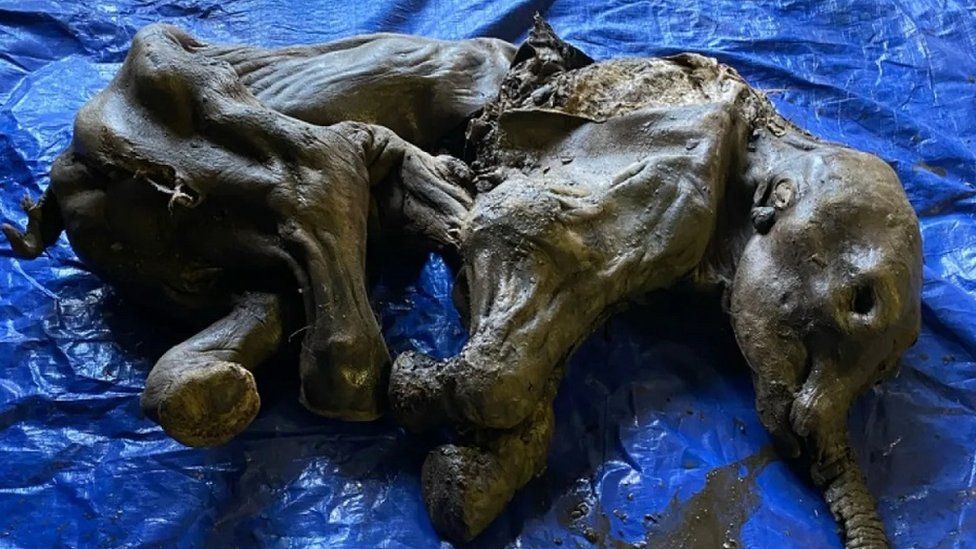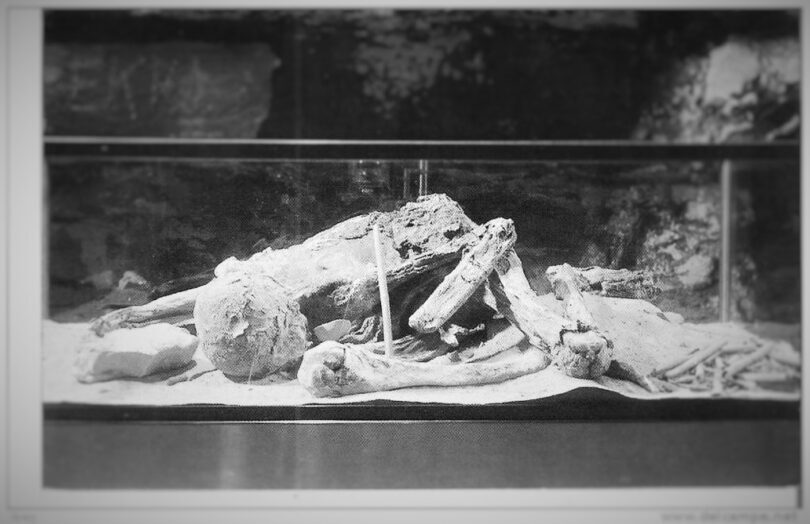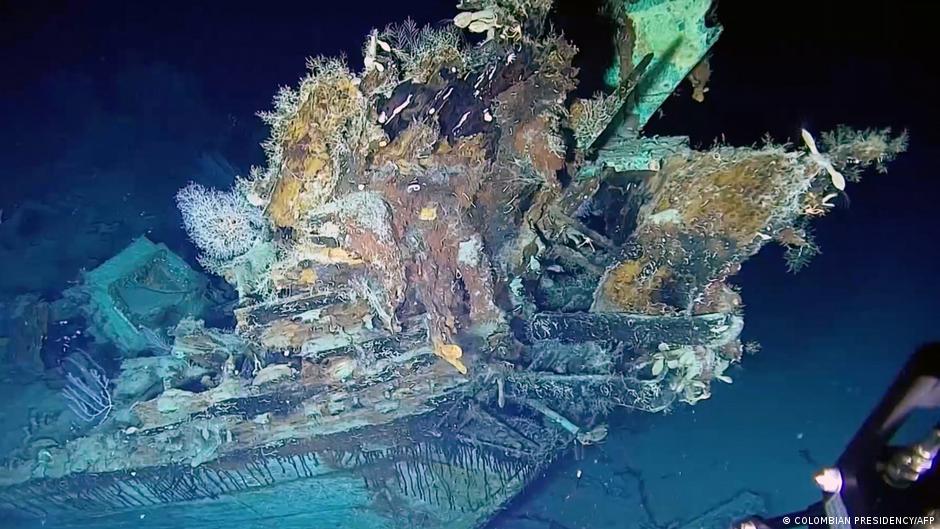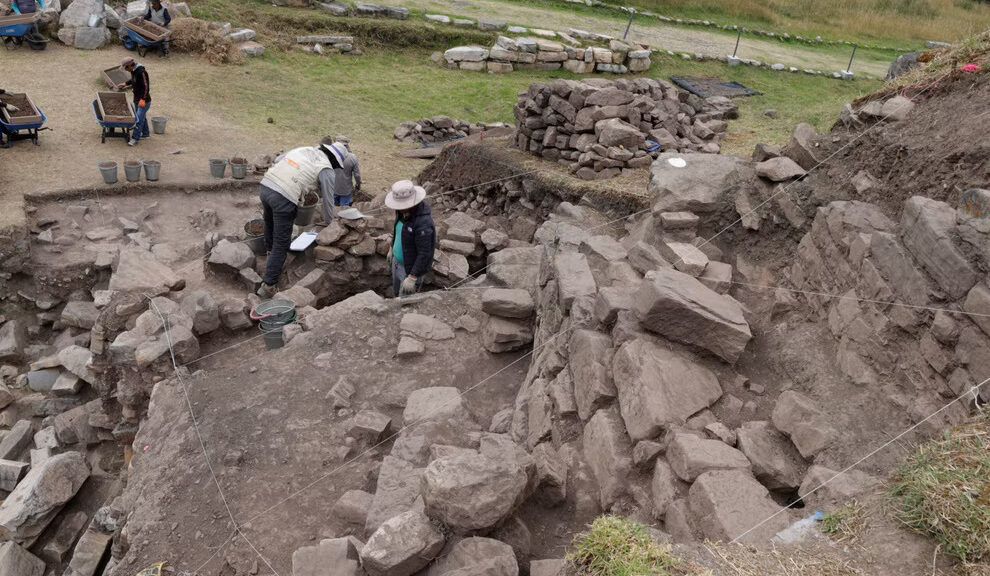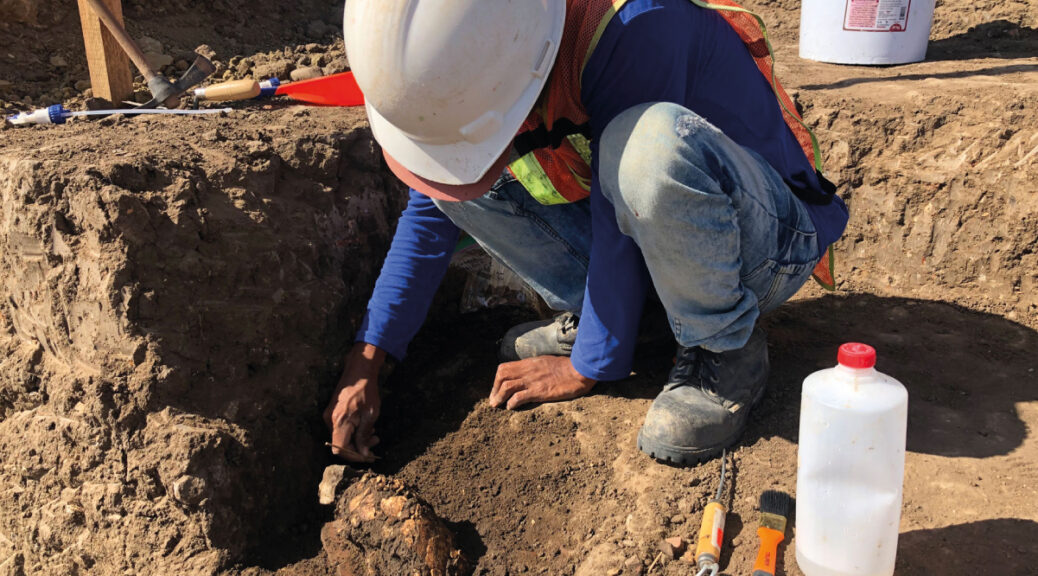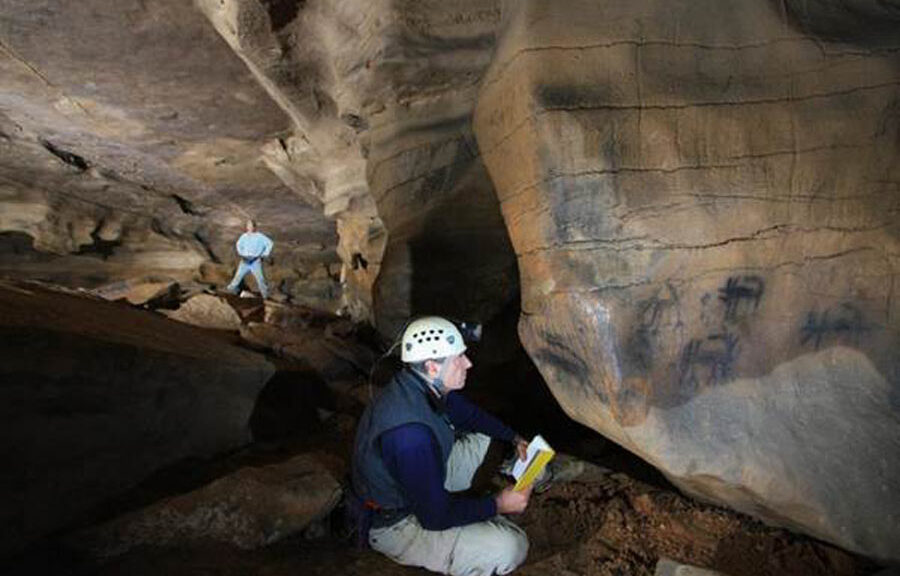Map of the Lost Lizard City under Los Angeles
This map is an essential ingredient of a story that has ‘Indiana Jones’ written all over it: secret caves, a lost civilisation and above all, a treasure trove of gold in unimaginable quantities. And all this is in the ground below the present-day metropolis of Los Angeles.

Below are two extracts from the LA Times of 29 January 1934, in the first of which reporter Jean Bosquet details the incredible story of G. Warren Shufelt, a mining engineer, who had been told of the underground city and its treasures by a wise old Indian, had consequently located it via ‘radio X-ray’ and at the time was sinking shafts into the ground to reach it.
The second extract explains the whereabouts of the putative underground city on the map and provides the legends for a few photos showing Shufelt’s hard work.
Needless to say, no such city has ever been found. Whether fully intentional or not, the hoax did leave us with this strange map of the supposed underground city, its tunnels vaguely laid out in the shape of a lizard.
Interestingly, this article on Skeptoid, a website providing critical analysis of pop phenomena, raises the possibility that Mr Bosquet’s story may be the original source for the later conspiracy theories about humanoid reptilians controlling the world. Indiana Jones has fathered David Icke…

LIZARD PEOPLE’S CATACOMB CITY HUNTED
Engineer Sinks Shaft Under Fort Moore Hill to Find Maze of Tunnels and Priceless Treasures of Legendary Inhabitants
(LA Times, 29 Jan 1934)
By Jean Bosquet
Busy Los Angeles, although little realizing it in the hustle and bustle of modern existence, stands above a lost city of catacombs filled with incalculable treasure and imperishable records of a race of humans further advanced intellectually and scientifically than even the highest type of present-day peoples, in the belief of G. Warren Shufelt, a geophysical engineer now engaged in an attempt to wrest from the lost city deep in the earth below Fort Moore Hill the secrets of the Lizard People of legendary fame in the medicine lodges of the American Indian.
So firmly do Shufelt and a little staff of assistants believe that a maze of catacombs and priceless golden tablets are to be found beneath downtown Los Angeles that the engineer and his aides have already driven a shaft 250 feet into the ground, the mouth of the shaft being on the old Banning property on North Hill street overlooking Sunset Boulevard, Spring Street and North Broadway.
LEGEND SUPPLIES CLEW (sic)
Shufelt learned of the legend of the Lizard People after his radio X-ray had led him hither and yon, over an area extending from the Public Library on West Fifth street to the Southwest Museum, on Museum Drive, at the foot of Mt. Washington.
“I knew I was over a pattern of tunnels,” the engineer explained yesterday, “and I had mapped out the course of the tunnels, the position of large rooms scattered along the tunnel route, as well as the position of deposits of gold, but I couldn’t understand the meaning of it.”
FIRE DESTROYS ALL
According to the legend, as imparted to Shufelt by Macklin, the radio X-ray has revealed the location of one of three lost cities on the Pacific Coast, the local one having been dug by the Lizzard People after the “great catastrophe” which occurred about 5000 years ago. This legendary catastrophe was in the form of a huge tongue of fire that “came out of the Southwest, destroying all life in its path,” the path being “several hundred miles wide.” The city underground was dug as a means of escaping future fires.
The lost city, dug with powerful chemicals by the Lizard People instead of pick and shovel, was drained into the ocean, where its tunnels began, according to the legend. The tide passing daily in and out of the lower tunnel portals and forcing air into the upper tunnels, provided ventilation and “cleansed and sanitized the lower tunnels,” the legend states.
Large rooms in the domes of the hills above the city of labyrinths housed 1000 families “in the manner of tall buildings” and imperishable food supplies of the herb variety were stored in the catacombs to provide sustenance for the lizard folk for great lengths of time as the next fire swept over the earth.
CITY LAID OUT LIKE LIZARD
The Lizard People, the legend has it, regarded the lizard as the symbol of long life. Their city is laid out like a lizard, according to the legend, its tail to the southwest, far below Fifth and Hope streets, it’s head to the northeast, at Lookout and Marda streets. The city’s key room is situated directly under South Broadway, near Second street, according to Shufelt and the legend.
This key room is the directory to all parts of the city and to all record tablets, the legend states. All records were kept on gold tablets, four feet long and fourteen inches wide. On these tablets of gold, gold having been the symbol of life to the legendary Lizard People will be found the recorded history of the Mayans on one particular tablet, the southwest corner of which will be missing, is to be found the “record of the origin of the human race.”
TABLETS PHOTOGRAPHED
Shufelt stated he has taken “X-ray pictures” of thirty-seven such tablets, three of which have their southwest corners cut off.
“My radio X-ray pictures of tunnels and rooms, which are sub-surface voids, and of gold pictures with perfect corners, sides and ends, are scientific proof of their existence,” Shufelt said. “However, the legendary story must remain speculative until unearthed by excavation.”
The Lizard people according to Macklin were of a much higher type intellectually than modern human beings. The intellectual accomplishments of their 9-year-old children were equal to those of present-day college graduates, he said. So greatly advanced scientifically were these people that, in addition to perfecting a chemical solution by which they bored underground without removing earth and rock, they also developed a cement far stronger and better than any in use in modern times with which they lined their tunnels and rooms.
HILLS INCLOSE CITY
Macklin said legendary advice to American Indians was to seek the lost city in an area within a chain of hills forming “the frog of a horse’s hoof.” The contour of hills surrounding this region forms such a design, substantiating Shufelt’s findings, he said.
Shufelt’s radio device consists chiefly of a cylindrical glass case inside of which a plummet attached to a copper wire held by the engineer sways continually, pointing, he asserts, toward minerals or tunnels below the surface of the ground, and then revolves when over the mineral or swings in prolongation of the tunnel when above the excavation.
He has used the instrument extensively in mining fields, he said.
DID STRANGE PEOPLE LIVE UNDER THE SITE OF LOS ANGELES 5000 YEARS AGO?
An amazing labyrinth of underground passages and caverns hundreds of feet below the surface of Fort Moore Hill is revealed in maps – all rights to which have been reserved – prepared by G. Warren Shufelt, local mining engineer, who explains his topographical endeavours as being based on results obtained from a radio X-ray perfected by him. In this elaborate system of tunnels and rooms, according to a legend furnished by Shufelt by an Indian authority, a tribe of human beings called the Lizard People, lived, 5000 years ago.
The network of tunnels formed what Indians call the lost Lizard City, according to Shufelt and the legend. Gold tablets on which are written the origin of the human race and other priceless documents are to be found in the tunnels, according to the legend. Shufelt declares his radio X-ray has located the gold. The engineer has dug a shaft 250 feet deep on North Hill street, overlooking North Broadway, Sunset and Spring streets, and intends to dig to 1000 feet in an effort to strike the lost city.
The Upper right-hand corner inset is Times Staff Artist Ewing’s conception of the Lizard People at work. Lower left, upper inset shows Shufelt and crew at top of the shaft, bailing water out of their deep excavation. The lower left inset shows Shufelt operating his radio X-ray device.
